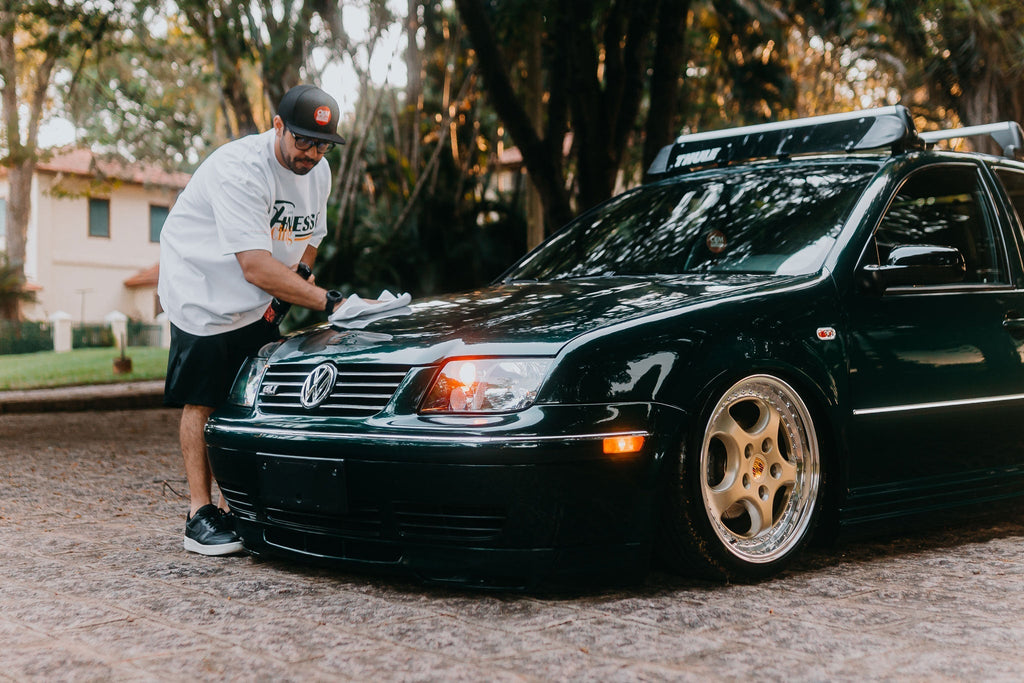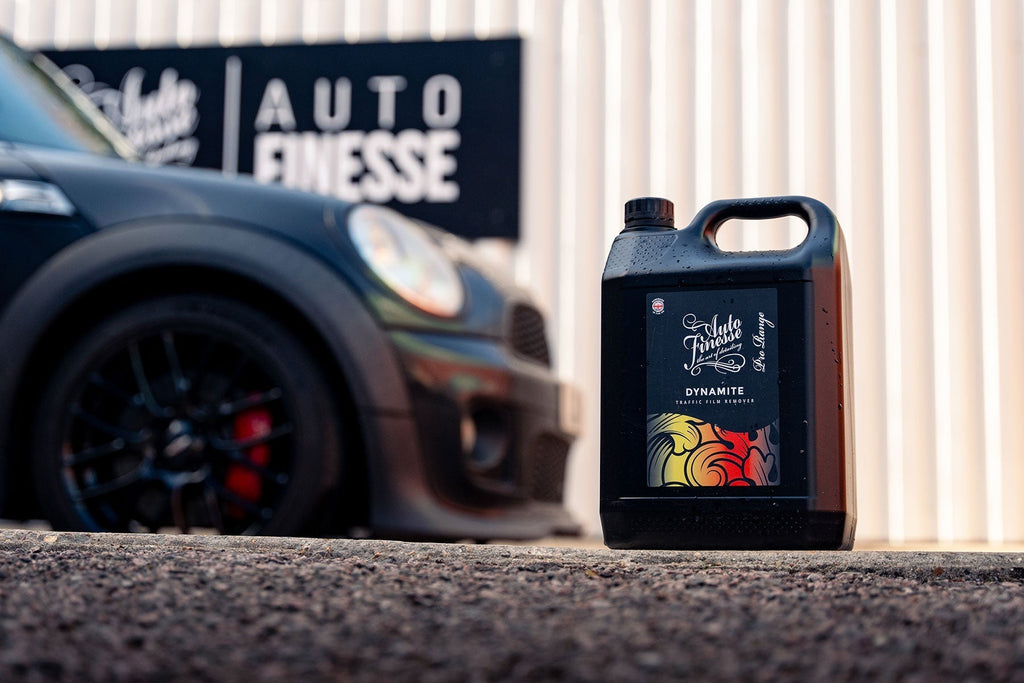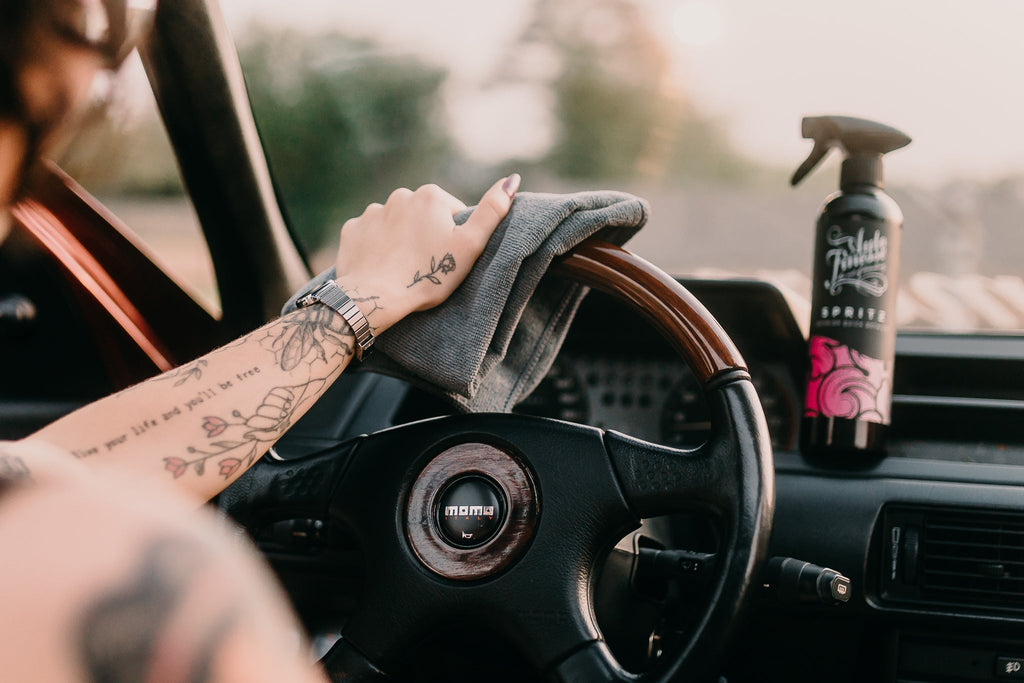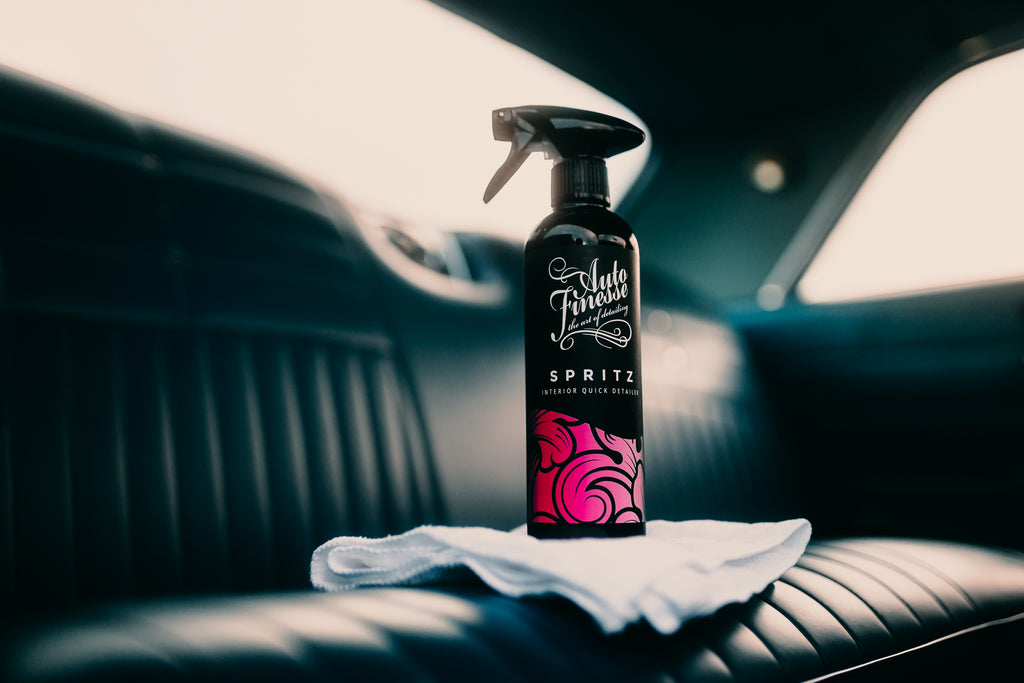Cleaning Alloy Wheels: A Detailers Guide

In This Guide:
- Explore the unique characteristics of specialist wheel finishes and the safest cleaning products to use
- Learn how to provide optimal protection for your alloys
- Understand the various processes involved, from show washing and decontamination to deep-cleaning and ceramic coating

Why Should You Clean & Protect Your Wheels?
- Contaminants such as baked-on brake dust can lead to corrosion, which may ultimately result in structural damage.
- Wheels are exposed to more harsh grime and road salt than any other part of your vehicle.
- Protecting your investment is always a smart decision!
The Only Part Of Your Vehicle That Makes Direct Contact With The Road!
Wheels are at the heart of what we do here at Auto Finesse – quite literally! Whether you’re a fan of high-end aftermarket alloys or prefer the original design your car came with, one thing is clear: cleaning your wheels is one of the most important aspects of detailing. It’s the first step in every wash routine and the initial detailing process you’ll tackle, with your wheels being cleaned every time you wash your car. But what products should you use? How should they be applied? And why bother washing them if they’ll just get dirty again? Here’s everything you need to know…

Why Is It So Important To Clean Your Wheels?
Cleaning and protecting your wheels is just as much about maintenance and safety as it is about aesthetics. Left unchecked, heavy fallout and other contaminants can seriously damage the alloy structure over time.
Consider this: your wheels and tyres are the only parts of your car that actually make direct contact with the road. No other components face the same level of contamination or temperature extremes. That’s why most wheels are painted or powder-coated — to provide the durability needed to withstand harsh weather conditions year-round. This type of protective finish is applied to standard wheels as well as the majority of aftermarket options, whether cast, flow-formed, or forged. Much like the paintwork that protects the rest of your car’s body, these coatings guard against grime, road salt, and other debris, preventing oxidation. However, this protection is not foolproof. Harsh contaminants, particularly the ferrous particles in brake dust, can eat through these protective layers if left untreated. Over time, they can penetrate the alloy itself, causing damage. The problem is even more severe with specialist finishes like bare metal, chrome, or anodised wheels, which often lack protective coatings altogether.
The good news is that this damage can be prevented by effectively cleaning away contaminants as soon as they appear. The reason you need a suitable cleaning product is that many of these tough pollutants require a more intense chemical treatment to be safely removed.



Choosing Your Products
While a powerful cleaner is essential for removing baked-on grime and brake dust, it's not the only factor to consider when choosing the right product for your wheels. The level of contamination, as well as the wheel's finish and design, play a significant role in determining the best cleaner and how it should be applied.

Painted And Powder-Coated Wheels
For most alloys, provided there is no curbing, corrosion, or damage to the protective layers, our core wheel cleaners—Imperial Wheel Cleaner, Reactive Wheel Cleaner, and Revolution Wheel Soap—are perfect for regular use. These cleaners effectively dissolve brake dust, grime, and other contaminants, which can then be rinsed away with a pressure washer. They are gentle on surfaces and won't strip away wheel waxes, sealants, or ceramic coatings. The main difference lies in how they are applied.
Imperial Wheel Cleaner and Reactive Wheel Cleaner are spray-on products that cling to the surface, breaking down grime and removing brake dust, while Revolution Wheel Soap is a mild shampoo that should be applied and agitated with a brush or wash mitt. These products can be used on their own or together for a comprehensive cleaning.






Painted & Powdercoated Wheels - Decontamination
Iron Out Contaminant Remover is another spray-on product that, while not specifically designed as a wheel cleaner, works exceptionally well for this purpose. It's particularly useful for tackling heavier fallout during periodic decontamination washes. Iron Out isn't intended for regular use, but rather as an occasional decontamination solution, effectively removing embedded metal particles from wheels just as it does on paintwork.



Specialist Wheel Finishes
As you might expect, certain wheel finishes demand more care and attention than others, which is why many enthusiasts opt to use their more expensive rims only during the summer months or on show cars kept in a garage rather than on daily drivers. We're referring to finishes such as bare metal surfaces, magnesium wheels, and chrome or anodised finishes. For these types of wheels, protecting the surface finish should take priority over using the most powerful cleaners and fallout removers. As a result, gentler cleaners like Revolution Wheel Soap are ideal for keeping these wheels clean. For light soiling—something that's common with these wheels—you can also use Verso All Purpose Cleaner or Citrus Power Bug & Grime Remover, along with Mercury Metal Polish to clean and shine any bare metal areas, particularly the lips and dishes.
It's important to remember that not all specialist finishes are what they seem. Many wheels that appear to be polished, anodised, or chrome are actually painted, or at least lacquered for protection. True chrome wheels, for example, are rare and expensive, with most chrome finishes being a type of chrome paint. Similarly, anodised wheels are often clear-coated from the factory to protect against staining and corrosion, and polished finishes—commonly seen on metal lips and dishes—are frequently lacquered as well. To check if your lips are bare metal, simply apply a small amount of Mercury Metal Polish using a sponge applicator. If the metal is unlacquered, the polish will react and turn black on the pad.




Wheel Designs
Another important factor to consider when choosing the right product is your wheel design. As we know, some wheels are much more intricate than others. For example, flat-faced and 5-spoke wheels are often easier to clean with certain products compared to more complex multi-spoke or mesh designs. The choice of product will typically depend on the physical properties of the cleaner, as well as how it's applied.
For our spray-on wheel cleaners, these are relatively thin liquids designed to penetrate tight spaces and lift grime effectively. Revolution Wheel Soap, on the other hand, creates a solution that can be brushed into the most detailed areas, gently cleaning the hardest-to-reach spots, including around wheel bolts. Iron Out, a thicker liquid, is formulated to linger on surfaces, reacting with metal deposits and dissolving them, so they can be rinsed away easily.



The Show Wash
In some situations, such as after a short drive to an event, a quick show wash may be all it takes to get your wheels looking fresh again. This method is best suited for light soiling, but when time (and water) is limited, using minimal water along with Finale Quick Detailer can work wonders.
Just add about 50ml of the product to every litre of clean water in a detailing bucket. Then, apply and agitate the solution with a detailing brush and wash mitt, followed by an immediate dry-off with an ultra-plush microfiber cloth. It's as simple as that!




Wheel Protection
It’s often overlooked, but if you protect your paintwork, why wouldn’t you protect your wheels too? In fact, wheels may need even more protection than the rest of your car! The goal is to create an invisible barrier against harmful contaminants. This professional technique not only shields the paint and metal layers underneath, but also makes future cleaning a breeze. When you prevent grime from sticking, it’ll simply slide off with minimal effort and product needed.
Wheel sealants and coatings are among the most valuable detailing products you can use. For example, our Mint Rims Wheel Wax has been a favorite among enthusiasts for years, providing 2-3 months of protection. This synthetic sealant not only adds a subtle shine but also protects against hot, abrasive brake dust and oxidation by preventing contaminants from bonding to the surface. Our Caramics Wheel Protection Kit takes things a step further—offering professional-grade ceramic coating that’s easy to apply at home. A simple spray and wipe application can provide up to 12 months of extreme protection.
Remember, it’s not just the visible parts of your wheels that need attention—be sure to protect the inner barrels and behind the spokes as well, as these areas are just as prone to contamination.
A great tip is to apply protection right from the start. Whether you're protecting brand-new wheels before mounting them or fresh off a refurbishment, a couple of coats of protection on the whole wheel will set you up for easy cleaning in the future.




Do It The AF Way!
While everyone has their own method for cleaning wheels, over the years, we've perfected a straightforward, effective process that works on most lacquered and powdercoated wheels. Want a professional-grade wheel clean every time you wash your car? Give this method a try…
Step 1 - Decontaminating with Iron Out
First things first, do your wheels need a deep clean and decontamination? If so, you'll need Iron Out, our pH-neutral contaminant remover. We don't recommend using this powerful formula on every wash, but if you're washing your daily driver weekly, once a month with Iron Out should be enough to keep deep-set contaminants at bay. Iron Out works by reacting with ferrous particles embedded in the paint, powdercoat, or lacquer. This reaction dissolves metal contamination, temporarily turning it red and forming a colloid (solid particles suspended in liquid) that can be rinsed away with a pressure washer.
Just spray it on, let Iron Out do its magic, and rinse it off.




Step 2 - Pre-washing With Imperial
Most of the time, this will be Step 1. Imperial is our spray-on wheel cleaner, perfect for regular use during maintenance washes. Despite its tough formula that tackles brake dust, grease, and grime, it's non-acidic, so it won’t strip wheel sealants. It’s even mild enough to use on tyre walls.
Like your paintwork, your wheels will benefit from a pre-wash. Start by rinsing off any loose dirt and mud with your pressure washer. Then, spray Imperial Wheel Cleaner generously over the entire wheel, let it dwell for a couple of minutes, and rinse it off.


Step 3 - Revolution
Now for the finer details. For heavy soiling, a second application of Imperial can be agitated by "brushing-in." This method is particularly effective for removing stubborn, baked-on grime, especially from the hard-to-reach and intricate areas of the wheel. To make the process even easier, we recommend doubling up—brushing in Imperial while using a solution of Revolution Wheel Soap.
Revolution is a highly advanced deep-cleaning formula that breaks down grime effortlessly, yet it's gentle enough to be used as a stand-alone cleaner for specialist finishes. No matter the type of wheel you're cleaning, simply add 2-3 capfuls of Revolution Wheel Soap to a bucket of water, and you're good to go.


Step 4 - Agitate
This is where you bring out the heavy-duty tools—your Barrel Brush (or Mini Barrel Brush). The inner barrels are often the dirtiest part of any wheel, so we recommend starting there. Use plenty of the Revolution solution to brush in the previously applied Imperial and thoroughly cleanse all heavy soiling.
Once the barrels are clean, move on to the spokes, lips, bolt holes, and other tricky areas using a soft Detailing Brush. Finish off with a wash mitt, dipping into your Revolution bucket to clean the wheel faces, behind the spokes, and any remaining hard-to-reach spots. After agitating every surface, rinse thoroughly to reveal a spotless finish.


Step 5 - Dry & Protect
Just as you wouldn’t let your paintwork air-dry, the same care should apply to your wheels. To avoid pooling, water spots, and unsightly drying marks (which could require polishing later), it’s essential to dry the faces and lips thoroughly. The simplest method is to use an Ultra Plush Microfibre Cloth to soak up any remaining water.
Once your wheels are clean and properly dried, it’s time to finish the job by applying your favorite protection product. This final step helps maintain their pristine condition for longer and makes future cleaning even easier.









